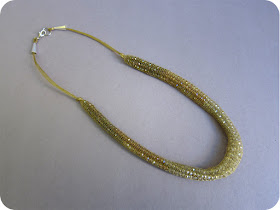matchy matchy
Thursday, March 31, 2011
Wednesday, March 30, 2011
Thursday, March 24, 2011
epic
On my way to work this morning, I rode my bike down 1st avenue against traffic. Passed a cyclist riding the correct direction in the bike lane and he shouted "SALMON!" at me. Took me a minute and then I got it! Made my morning.
Riding home from work last Friday, I got into a little accident on 7th avenue. Car pulled out of a spot right in front of me and I slammed the brakes, face planting over the handle bars into the street. No real damage, but a gnarly bruise on my upper thigh.
It's kind of pretty. Like outer space.
Tuesday, March 22, 2011
doing mushrooms
Spent Monday—my dreary day off—inside crafting clay mushrooms designed to add a bit of whimsy to any potted plant.
Attack of the fleshy fungicide!!!
Monday, March 21, 2011
color scraps
Last Thursday, we spent the day cleaning the craft room at Martha. I worked on rearranging and organizing our paper section. It was extremely satisfying to organize all the paper scraps by color.
Sometimes the strangest things can make you smile.
Organizing by color is one of 'em.
Tuesday, March 15, 2011
Friday, March 11, 2011
milk paint pots
Sometimes I develop projects for Martha because it just something I want to do at home.
For instance, I was so sick of looking at all the terra cotta pots that line my windowsills that I cultivated an idea to fix the sore sight and made a segment out of it so it could be shared with others.
What can you do to update your terra cotta without purchasing expensive planters and trashing the old clay pots?! The first step: change the color. Second step: add some simple details. Let's do it.
Milk Paint is a perfect solution for painting clay pots. It's natural, has no VOCs, dries matte, soaks evenly into porous surfaces and comes in a variety of colors that will complement any plant. I chose Driftwood, a grayish color, to offset the brown teak furniture that is prevalent throughout my apartment.
Milk Paint comes in a powder form so it needs to be mixed with water to become actual paint. I didn't even bother to take my plants out of the pots while I painted them—messy but who cares, we're crafting.
I ran out to buy some cotton rope from the hardware store and used it to create a decorative element to the plain pot. I braided it, twisted it and even tried out my newest skill of 4 strand braiding.

Paint one coat, let it dry, hot glue your rope under the rim around the pot and paint again. The rope absorbs the paint and it winds up looking like part of the original pot design.
I'm loving my new plant vessels—I notice my plants now and remember to water them!
It's always a success when it's cheap, simple and a transformation.
Now I want more plants!
Wednesday, March 9, 2011
Tuesday, March 8, 2011
Giveaway on the craftsdept blog!!!!
The mesh ombre necklaces Martha and I made on the show last week are up for grabs!
Monday, March 7, 2011
wirelace ombre necklace photo how-to
1. To create an ombre effect, select four strands of different color beads. I purchased 6mm fresh water pearls from Stone International, here in NYC. Ombre is a gradation of color tones and can be achieved in any palette. This necklace starts with white pearls fading into a deep brownish pink.
2. Decide whether you prefer the gradation to go from light to dark or dark to light. Separate and arrange your beads into eight equal portions to create 4 new beaded strands. Whether it's the dark or light color that ends up in the middle, double up your eight portions of that bead.
3. String beads on thin monofilament (0.01- inch gauge).
4. Your 4 strands should look similar to the above. These strands are 16" in length.
5. Be sure to leave about six inches of extra monofilament at the ends of each strand. To secure the end beads firmly on the strand, feed the end of the monofilament around and back through the bead. Do this on all ends of your strands.
6. Line up the four strands of beads and, using electrical tape, tightly tape one end of each of the four strands to one end of a thin double-pointed knitting needle. To prevent snagging on WireLace, make sure tape completely covers all ends of monofilament.
7. Choose a color of 6mm Wirelace that complements your gradient. For this palette I used a yard of blush.
9. Insert the knitting needle into the other end of Wirelace and remove, keeping the Wirelace in a tubular form.
10. Feed all four strands of beads through one end of the Wirelace. The knitting needle will help pull the strands through.
11. Carefully guide the knitting needle through the yard of Wirelace until it is out the other side. Center the strands in the WireLace by smoothing it out over the beads.
12. Remove tape and detach strands from knitting needle.
13. Determine the length of your necklace and fold ends of WireLace to mark ends. Using a small hook of fine-gauge wire, pull each WireLace loop through a metal cone end cap. With jewelry pliers, attach jump rings to each loop and attach lobster claw clasp to one jump ring.
14. Trim any extra WireLace and monofilament hanging out of end caps and squeeze a drop of all-purpose adhesive into each end cap to secure loops.
15. Now you have a pearl necklace like Martha!
For a video how-to, visit marthastewart.com.





























































